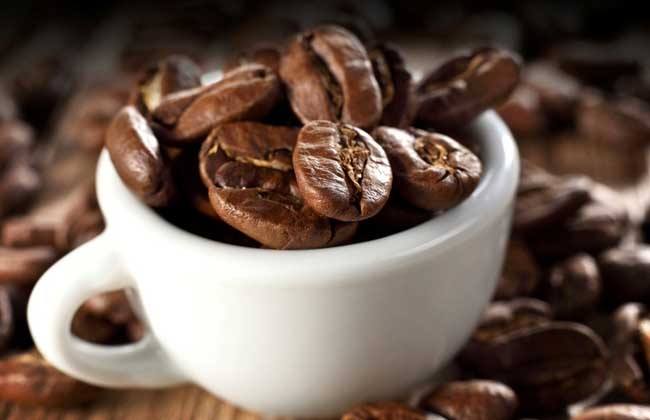History and characteristics of Kenyan coffee beans
Follow the caf é (Wechat official account vdailycom) and found that Beautiful Cafe opened a small shop of its own.
History of coffee beans in Kenya
Africa is the third largest coffee producer in the world, after Central and South America and Asia. African fine beans are mainly in Ethiopia, Kenya and Yemen, but the development of coffee industry in Kenya is relatively late. It was not until the beginning of the 20th century that he began to engage in coffee cultivation.
Although Kenya (kenya) borders Ethiopia, there are obvious differences in variety, bean appearance and flavor. Kenya beans are fully collected and washed, the beans are fat and full, and the strong berry aroma fascinates coffee fans most, as well as the sour aromas of black plum juice and grapefruit, as well as the sweet smell of sugarcane, which is the most typical flavor of Kenyan beans.
In the 19th century, missionaries introduced Arabica trees from Yemen, but did not plant them in large quantities. Coffee was not cultivated on a large scale until 1893, when the ancient Brazilian bourbon seeds were introduced. That is to say, the current Kenyan coffee has Brazilian ancestry, but the Kenyan bean flavor is very different from that of Brazilian beans due to differences in soil and water, climate and handling methods.

Kenya, the full name of the Republic of Kenya, is located in eastern Africa, the equator runs across the central part of the equator, and the Great Rift Valley of East Africa stretches north and south. It is bordered by Somalia to the east, Tanzania to the south, Uganda to the west, Ethiopia and Sudan to the north, and the Indian Ocean to the southeast. There are many plateaus in the territory, with an average elevation of 1500 meters. The central peak of Kirinaga (Mount Kenya) is 5199 meters above sea level and the top of the mountain is covered with snow, making it the second highest peak in Africa.
Altitude, geology, latitude, treatment methods and varieties have made Kenyan coffee a heavyweight in the boutique world.
Altitude, latitude, geology: the equator runs through Kenya, and the border is just within ten degrees of north and south latitude. Belonging to tropical producing areas, there are two rainy seasons every year, with two harvests, with 60% concentrated from October to December and another 40% from June to August. Coffee is mainly grown in volcanic land around 1600-2100 meters above sea level from the capital Narobi to the mountains of Kenya. This height is suitable for the development of coffee bean flavor, because the mountain temperature is lower, the growth is slow, the aroma components of coffee beans have been fully developed, the sour taste is more obvious, and the texture is harder. This fertile moonbend-shaped coffee area is the main producer of Kenyan boutique beans.
Coffee is Kenya's second export product after tea. The main variety of coffee beans produced in Kenya is Arabica, which is one of the best quality coffee varieties in the world.
In the 16th century, Portuguese colonists occupied the coastal areas. In 1890, Germany and Britain divided East Africa, and Kenya was classified as Britain. The British government declared Kenya its "East African protectorate" in 1895 and changed it into its colony in 1920. Coffee was grown on large estates under British colonial rule, and the harvested beans were shipped to London for sale. The Coffee Act of 1933 was passed and the Kenya Coffee Commission was established, which in turn transferred coffee sales to Kenya. The auction system was established in 1934 and is still in use today. The following year, a draft grading system to help improve the quality of coffee was formally prepared. Kenya was founded in the Republic of Kenya on December 12, 1964 and remains in the Commonwealth. Nowadays, a variety of high-quality coffee can be produced. Kenya has made considerable progress in coffee research and development, and many farmers have highly professional knowledge of production. Kenya's coffee bidding system should help to get higher prices for producers who value quality.
Kenyan buyers are world-class buyers of premium coffee. All coffee beans are first acquired by the Kenya Coffee Commission (CoffeeBoardofKenya, CBK), where they are identified, graded, and then sold at weekly auctions, where they are no longer graded. The Kenya Coffee Commission only acts as an agent, collecting coffee samples and sending them to buyers so that they can determine the price and quality.
Characteristics of coffee beans in Kenya
Fragrant, full-bodied, with fruit flavor, taste rich and perfect. Kenyan coffee has a wonderful fruit flavor, tastes like BlackBerry and grapefruit, and is a favorite of many coffee gluttons. This coffee has an excellent medium purity, crisp and refreshing taste. It has a fresh flavor and is most suitable for drinking iced coffee in summer. When tasting this coffee, if it is paired with sour fruits such as grapefruit, it will certainly give me the best coffee experience. "not much like coffee, but a bit like fruit tea" is the common feeling of many people about this kind of shallow roasted Kenyan coffee.
In addition to having obvious and charming fruit acidity, Kenyan coffee is mostly from small coffee farmers, planted in a variety of different environments, encounter different climate and rainfall every year, and bring a variety of distinct and unique personalities. Take the AAPlus grade "KenyaAA+Samburu" as an example, the Samburu in 2001 has a strong aroma of black plum, the acidity is not high, and the taste is strong. The newly harvested Samburu in the winter of 2002 presents a completely different flavor, mulberry and green plum, with a little Nanyang spice (Spicy) flavor, after drinking, the aftertaste has the sweetness of green tea, the acidity is slightly higher than the year before, the taste is still strong. The common Kenyan taste is not strong, but it has a bright fruit-like flavor, some spicy and some red wine. This is how Kenya makes coffee fans full of expectations and surprises!
Important Notice :
前街咖啡 FrontStreet Coffee has moved to new addredd:
FrontStreet Coffee Address: 315,Donghua East Road,GuangZhou
Tel:020 38364473
- Prev

The history and characteristics of Brazilian coffee
Following Cafe Review (Wechat official account vdailycom) found that Beautiful Cafe opened a small shop of its own Brazil: the world's largest coffee producer to have a cup of coffee Sinio? On many occasions, Brazilians will ask you like this, for example, when you visit a friend, a hospitable host will ask you; when you talk to someone about business, your business partner will ask you; even when the mall is tired of shopping, sell
- Next

Introduction of coffee bean producing areas in Kenya the flavor and taste characteristics of Kenyan coffee in Africa are recommended.
Following Kaibei (official Wechat account vdailycom) found that Kenyan coffee, which is mostly grown at an altitude of 1500Murray 2100m above sea level, is harvested twice a year. To ensure that only ripe berries are picked, people must tour the forest and go back and forth about
Related
- Detailed explanation of Jadeite planting Land in Panamanian Jadeite Manor introduction to the grading system of Jadeite competitive bidding, Red bid, Green bid and Rose Summer
- Story of Coffee planting in Brenka region of Costa Rica Stonehenge Manor anaerobic heavy honey treatment of flavor mouth
- What's on the barrel of Blue Mountain Coffee beans?
- Can American coffee also pull flowers? How to use hot American style to pull out a good-looking pattern?
- Can you make a cold extract with coffee beans? What is the right proportion for cold-extracted coffee formula?
- Indonesian PWN Gold Mandrine Coffee Origin Features Flavor How to Chong? Mandolin coffee is American.
- A brief introduction to the flavor characteristics of Brazilian yellow bourbon coffee beans
- What is the effect of different water quality on the flavor of cold-extracted coffee? What kind of water is best for brewing coffee?
- Why do you think of Rose Summer whenever you mention Panamanian coffee?
- Introduction to the characteristics of authentic blue mountain coffee bean producing areas? What is the CIB Coffee Authority in Jamaica?

